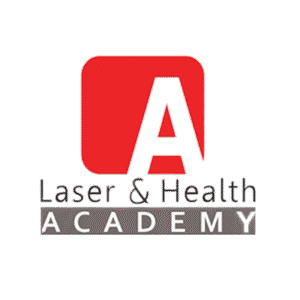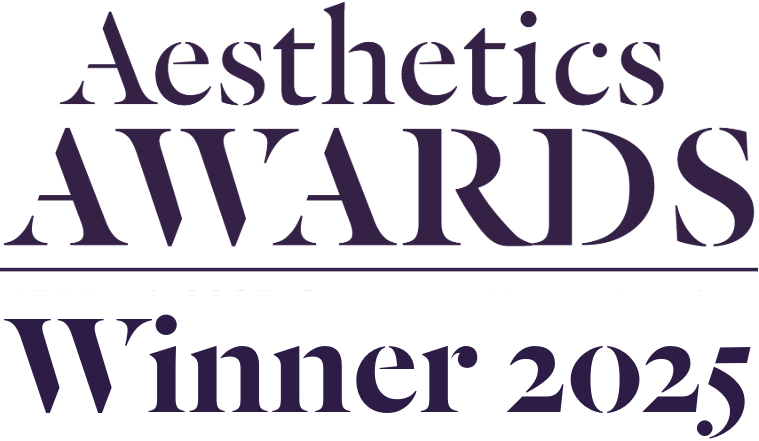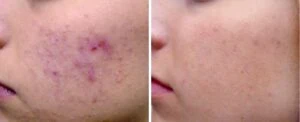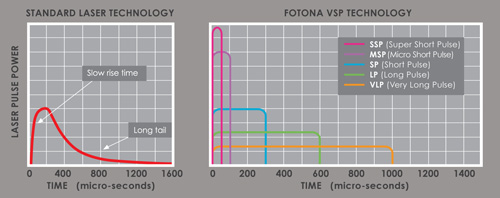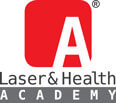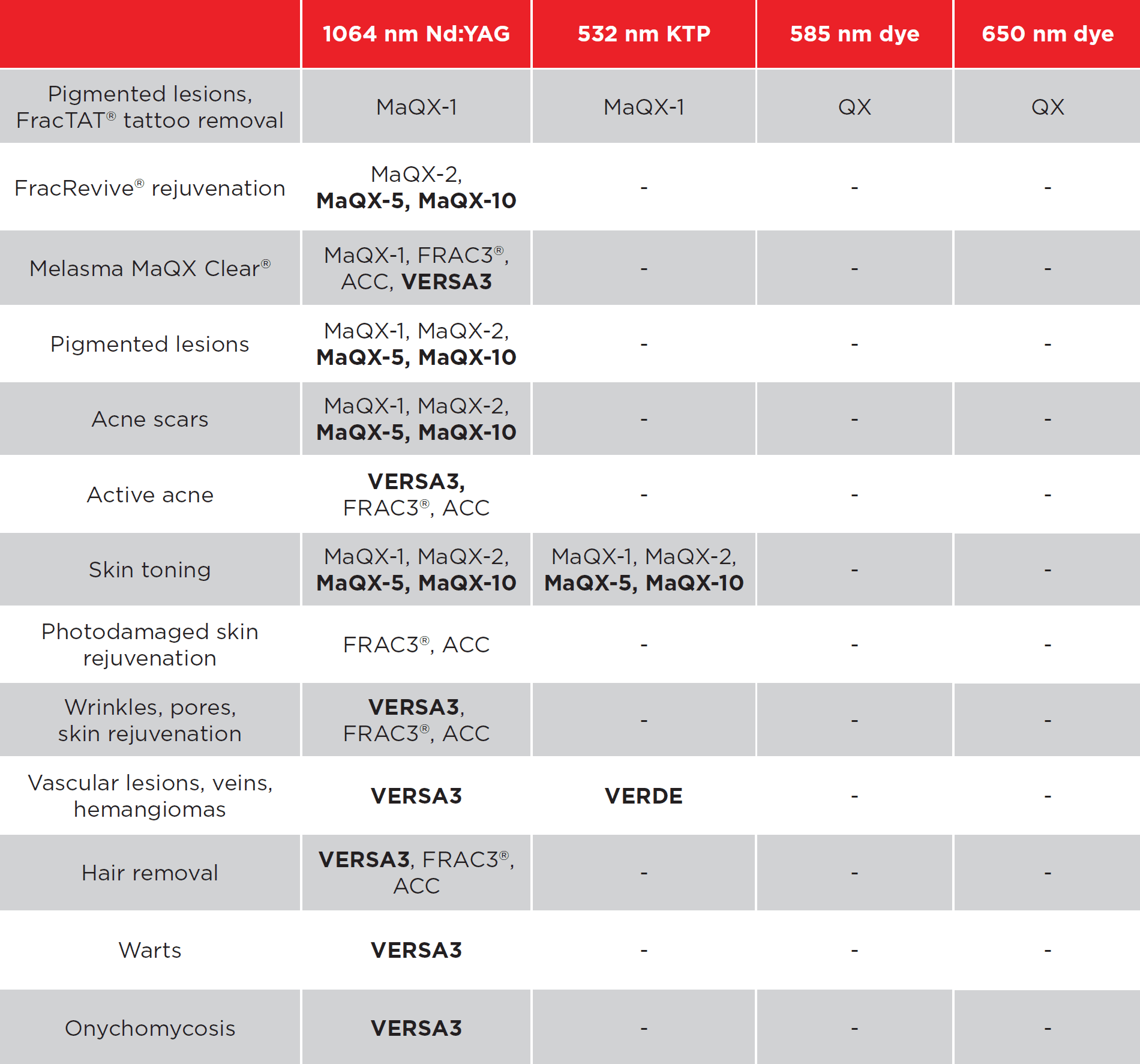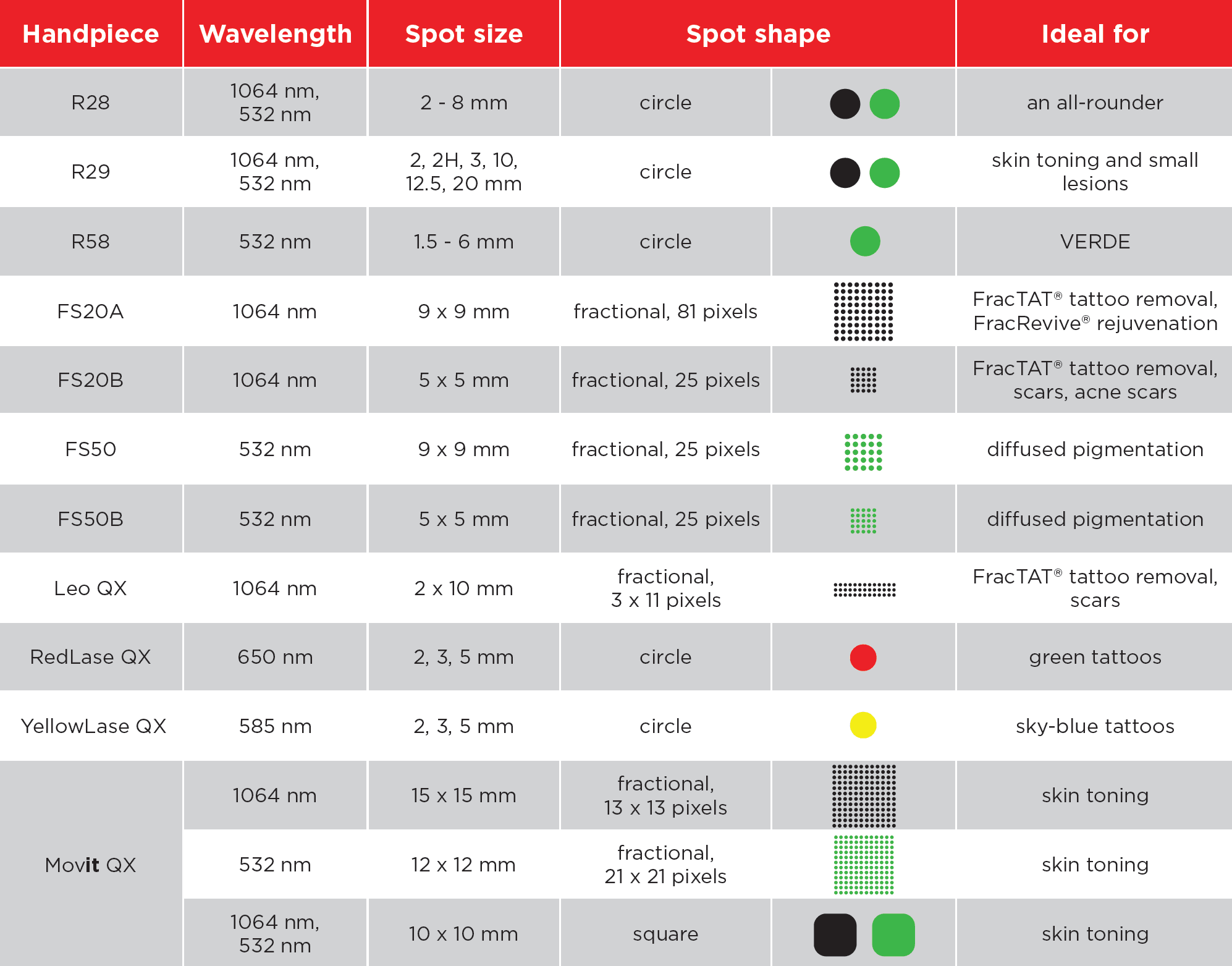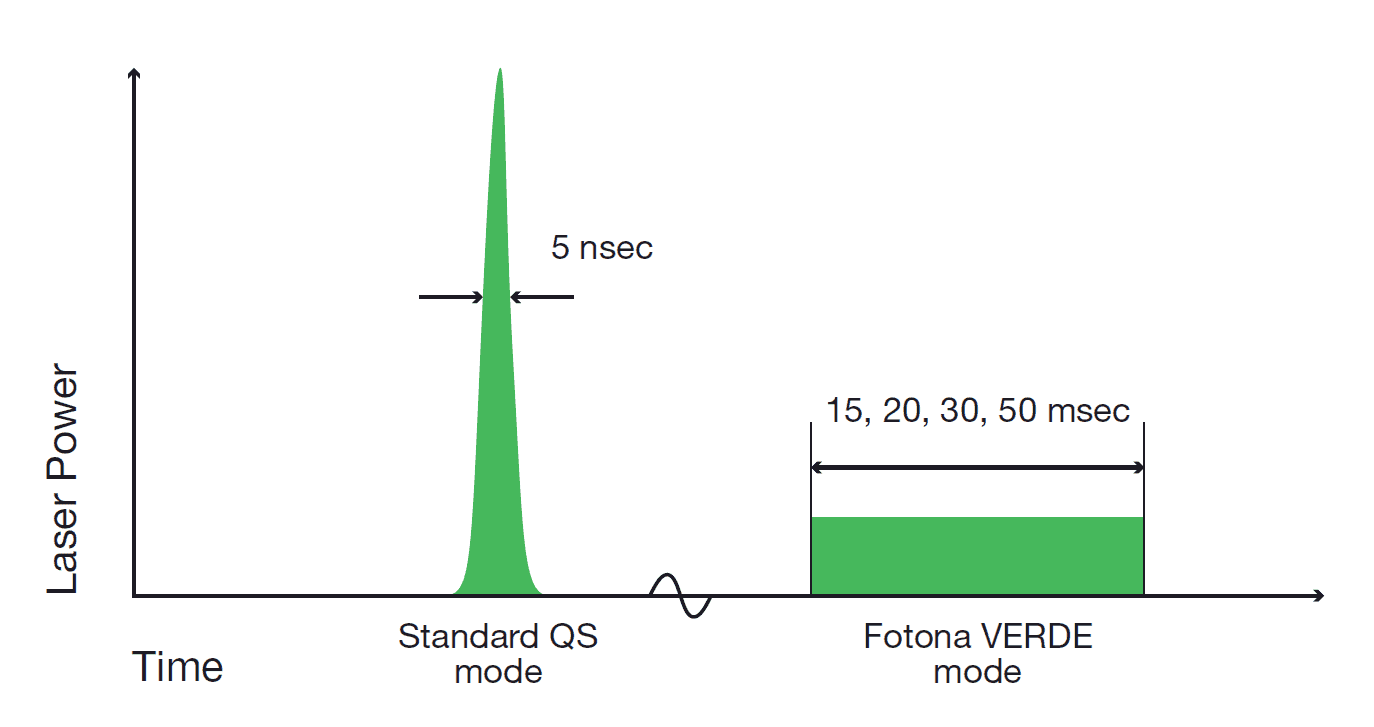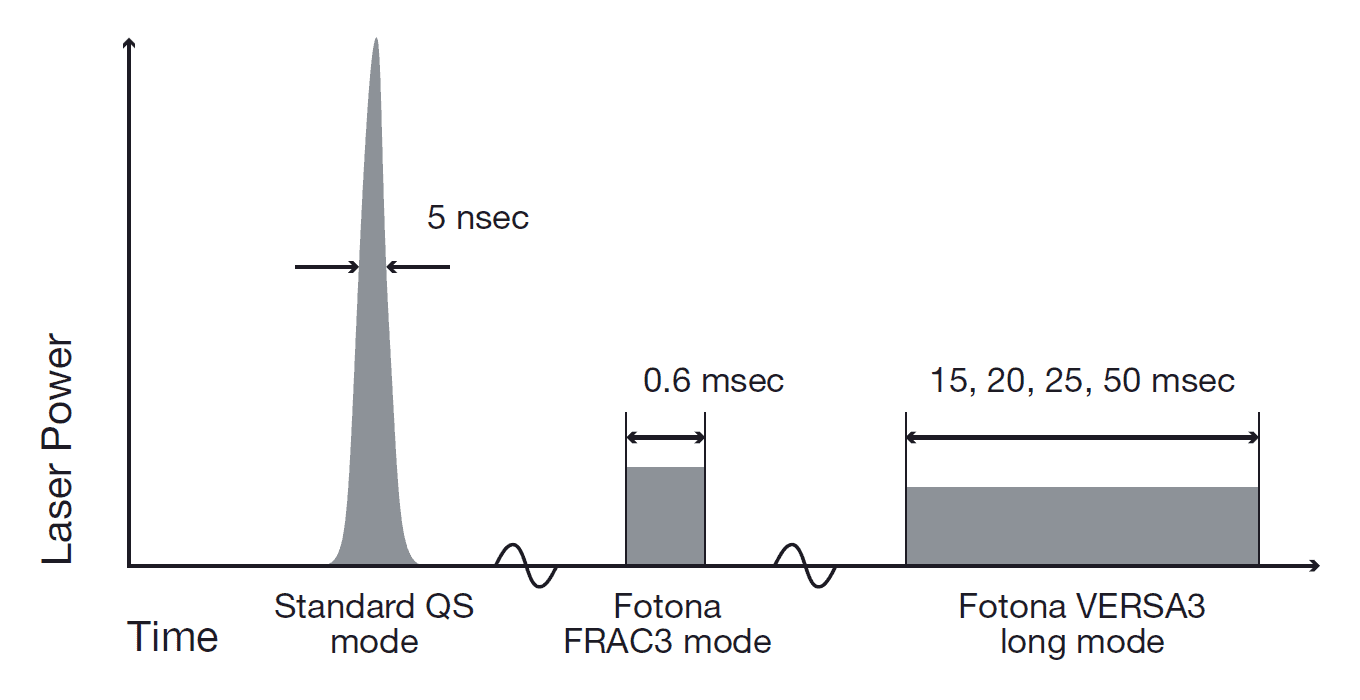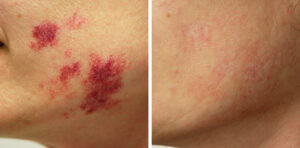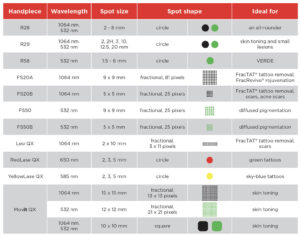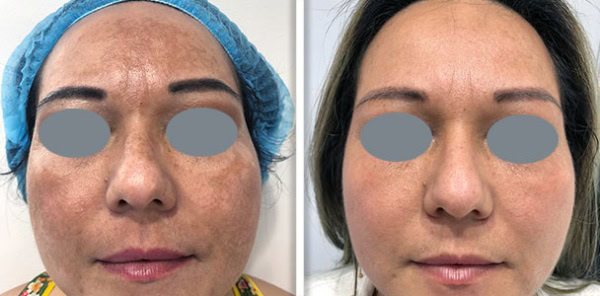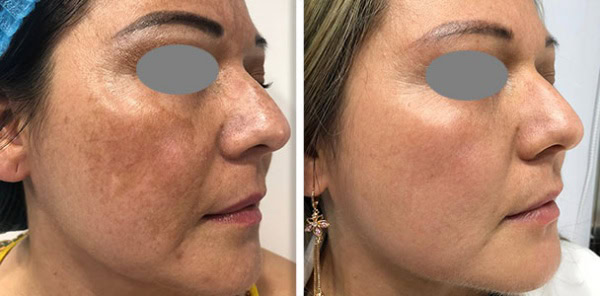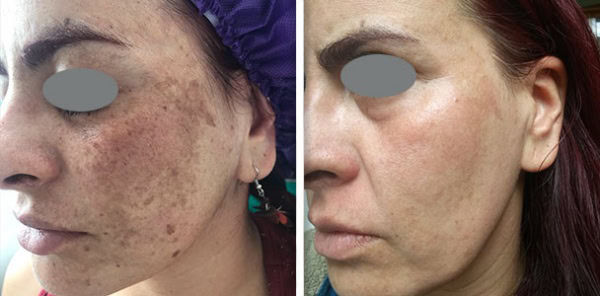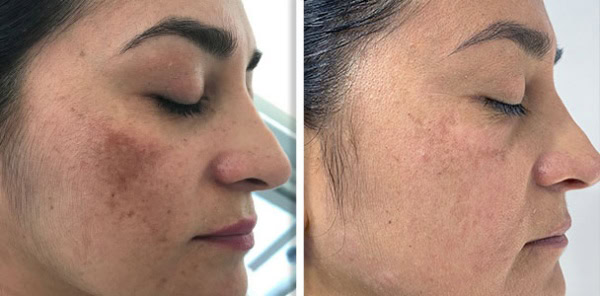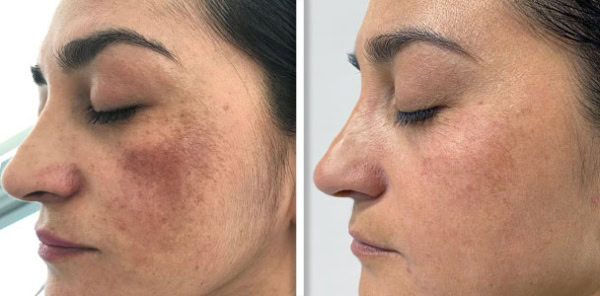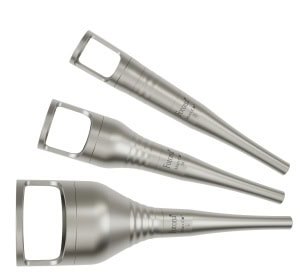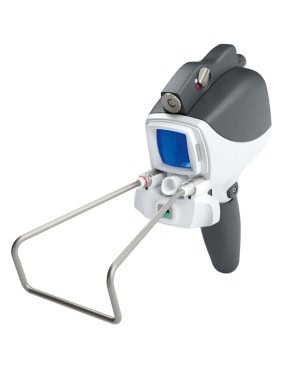TightSculpting®
Smooth Resurfacing by Hyper Stacking of Er:YAG Laser Pulses; a Histological and Clinical Study –
Read Full text
Adrian Gaspar, Marcelo Tettamanti, Branka Korošec, Matjaž Lukač
J LA&HA – J Laser Health Acad 2022; 2022(1):onlineFirst
Efficacy and safety of long pulse 1064 and 2940 nm lasers in noninvasive lipolysis and skin tightening –
Read Full text
Vas, K. et al.
Journal of biophotonics, 2019.
Safety and Effectiveness of the Combined Nd:YAG and Er:YAG Laser-assisted TightSculpting® Body Contouring Procedure –
Read Full text
Pham-Huu Nghi
J LA&HA – J Laser Health Acad 2019; 2019(1):11-15
CASE REPORT: Combined Er:YAG and Nd:YAG Laser Treatment for Non-Invasive Body Contouring –
Read Full text
Adrian Gaspar
J LA&HA – J Laser Health Acad 2015; 2015(1):OnlineFirst
Mark B. Taylor
J LA&HA – J Laser Health Acad 2013; 2013(2):CN03
Fotona4D®
Efficacy of Erbium-Doped Yttrium Aluminium Garnet 2,940 and 1,064 nm Laser Treatment for Facial Rejuvenation-A Randomized Controlled Split-Face Clinical Trial –
Read Full text
Song, W., Tian, Y., Tan, W., Wang, G. & Gao, L.
Dermatologic surgery : official publication for American Society for Dermatologic Surgery. 2021 Nov 1;47(11):1455-1459.
Histological and Immunohistochemical Changes in Facial Skin Treated with Combined Ablative and Non‐Ablative Laser Therapy –
Read Full text
N.A. Shanina, A.V. Patrushev, A. Zorman
Journal of Cosmetic Dermatology (2021), doi.org/10.1111/jocd.14023
Correction of nasolabial folds wrinkle using intraoral non-ablative Er:YAG laser –
Read Full text
Howyda ME, Khaled G
Journal of Cosmetic and Laser Therapy (2018). 20:6, 364-368
Fotona4D®Men
Efficacy of Erbium-Doped Yttrium Aluminium Garnet 2,940 and 1,064 nm Laser Treatment for Facial Rejuvenation-A Randomized Controlled Split-Face Clinical Trial –
Read Full text
Song, W., Tian, Y., Tan, W., Wang, G. & Gao, L.
Dermatologic surgery : official publication for American Society for Dermatologic Surgery. 2021 Nov 1;47(11):1455-1459.
Histological and Immunohistochemical Changes in Facial Skin Treated with Combined Ablative and Non‐Ablative Laser Therapy –
Read Full text
N.A. Shanina, A.V. Patrushev, A. Zorman
Journal of Cosmetic Dermatology (2021), doi.org/10.1111/jocd.14023
Correction of nasolabial folds wrinkle using intraoral non-ablative Er:YAG laser –
Read Full text
Howyda ME, Khaled G Journal of Cosmetic and Laser Therapy (2018). 20:6, 364-368
Acne & Acne Scar Revision
The comparative study of efficacy between 1064-nm long-pulsed Nd:YAG laser and 595-nm pulsed dye laser for the treatment of acne vulgaris. –
Read Full text
Chalermsuwiwattanakan, N., Rojhirunsakool, S., Kamanamool, N., Kanokrungsee, S., & Udompataikul, M.
Journal of Cosmetic Dermatology, 20(7), 2108–2115, 2021.
Resurfacing of Facial Acne Scars With a New Variable-Pulsed Er:YAG Laser in Fitzpatrick Skin Types IV and V –
Read Full text
Chathra N, Mysore V.
J Cutan Aesthet Surg, 11(1):20-25, 2018.
Successful therapy of excoriated acne with Nd:YAG laser: a case report. –
Read Full text
Tlaker, V.
Acta dermatovenerologica Alpina, Pannonica, et Adriatica, 26(3), pp.73–75, 2017.
CASE REPORT: Treatment of Acne Vulgaris with Long-Pulsed 1064 nm Nd:YAG Laser –
Read Full text
Robin Sult
J LA&HA – J Laser Health Acad 2014; 2014(1):57-60
Evaluation of effectiveness of erbium:yttrium-aluminum-garnet laser on atrophic facial acne scars with 22-MHz digital ultrasonography in a Turkish population –
Read Full text
Engin, B. et al.
Journal of Dermatology, 39(12)982–988. 2013.
NightLase®
A Long-Term Follow-up Study for the Treatment of Snoring after Using Patterned Non-Ablative Erbium: YAG 2,940 nm Laser –
Read Full text
Kassab, A.N., El Kharbotly, A., Abd Elsamie, A. and Ahmed
International Archives of Otorhinolaryngology,27(01): e104-e110.
Treatment of snoring using a non-invasive Er:YAG laser with SMO OTH mode (NightLase): a randomized controlled trial –
Read Full text
Picavet, V.A., Dellian, M., Gehrking, E. et al.
Eur Arch Otorhinolaryngol, 280(1):307-312. 2023
Clinical Efficacy Evaluation of Er: YAG Laser Treatments for Obstructive Sleep Apnea Hypopnea Syndrome. –
Read Full text
Liu J, Yang J, Zhang M, Chen Y, Li Q.
Biomed J Sci Tech Res. 2019;20(3):15010-15016.
Outpatient Erbium:YAG (2940 nm) Laser Treatment for Snoring: A Prospective Study on 40 Patients –
Read Full text
Fini Storchi I, Parker S, Bovis F, Benedicenti S, Amaroli A.
Lasers Med Sci. 2018;33(2):399-406. doi:10.1007/s10103-018-2436-6
Onychomycosis
Clinical retrospective analysis of long-pulsed 1064-nm Nd:YAG laser in the treatment of onychomycosis and its effect on the ultrastructure of fungus pathogen –
Read Full text
Cao, Y., Xu, S., Kong, W., Xu, Y., & Fang, H.
Lasers in Medical Science 2019 35:2, 35(2), 429–437. 2010.
A comparative clinical and mycological study of Nd-YAG laser versus topical terbinafine in the treatment of onychomycosis –
Read Full text
El-Tatawy RA, Abd El-Naby NM, El-Hawary EE, Talaat RAZ.
J Dermatolog Treat. 2015; 26(5), 461-464.
Permanent Hair Reduction
Evaluation of Safety, Comfort and Efficacy of “Avalanche” Method of DMC-Assisted Alexandrite Laser Hair Removal –
Read Full text
Jernej Kukovič, Neja Gerdovič, Anže Zorman, Jasmina Vesel, Irena Hreljac, Matjaz Lukac
J LA&HA – J Laser Health Acad 2023; 2023(1):preprint
Efficacy and safety of mascara dyeing as an adjunct to Alexandrite and Nd:YAG laser applications for removing thin and white-colored facial and axillary hair –
Read Full text
Balevi A,Ustuner P, Ozdemir M.
J Cosmet Laser Ther, 18(8):459-466. 2016.
Beyond Customary Paradigm: FRAC3® Nd:YAG Laser Hair Removal –
Read Full text
Matjaz Lukac, Martin Gorjan, Janez Zabkar, Ladislav Grad, Zdenko Vizintin
J LA&HA – J Laser Health Acad 2010; 2010(1):35-46
Scar Revision
Hypertrophic Scar Outcomes in Fractional Laser Monotherapy Versus Fractional Laser-Assisted Topical Corticosteroid Delivery: A Randomized Clinical Trial –
Read Full text
Manuskiatti, W., Kaewkes, A., Yan, C., Ng, J. N., Glahn, J. Z., & Wanitphakdeedecha, R.
Acta Dermato-Venereologica, 17;101(3), 2021.
Safety and Efficacy of Long-pulsed Nd:YAG Laser for the Treatment of Keloids – A Prospective Study of 39 Keloids –
Read Full text
Venkataram Mysore, Madhulika Mhatre.
Laser and Health Academy, 2015.
J LA&HA – J Laser Health Acad 2015; 2015(1):OnlineFirst
Comparison of fractional erbium-doped yttrium aluminum garnet and carbon dioxide lasers in resurfacing of atrophic acne scars in Asians –
Read Full text
Manuskiatti, W. et al.
Dermatologic surgery, 39(1 Pt 1), pp.111–120. 2013.
Rejuvenation
Intense Heat-Shock Biomodulation (i-HBM) of Skin and Mucous Cells with the Fotona SMOOTH® Er:YAG Laser Modality –
Read Full text
Matjaz Lukac, Irena Hreljac, Sasa Terlep, Marcelo Tettamanti
J LA&HA – J Laser Health Acad 2022; 2022(1):onlineFirst
Efficacy of Erbium-Doped Yttrium Aluminium Garnet 2,940 and 1,064 nm Laser Treatment for Facial Rejuvenation—A Randomized Controlled Split-Face Clinical Trial –
Read Full text
Song Wenting, Tian Yangzi, Tan Wenbin, Wang Gang, Gao Lin
Dermatologic Surgery (2021), Volume 47, Issue 11, p:1455-1459, doi:10.1097/DSS.0000000000003205
Skin Resurfacing
Comparative Study Between the efficacy of Long-Pulsed Neodymium- YAG Laser and Fractional Co2 Laser in the Treatment of Striae Distensae –
Read Full text
Hendawy, A. F., Aly, D. G., Shokeir, H. A., & Samy, N. A.
Journal of Lasers in Medical Sciences, 12(1), 2022.
The Efficacy and Safety of a Variable Square Pulse (VSP) Erbium:YAG Laser for Treatment of Enlarged Pores in Asians –
Read Full text
Phothong W, Manuskiatti W, Cembrano KAG, Wanitphakdeedecha R, Bowornsathitchai N.
Lasers Surg M, 2021 Jul;53(5):616-62.
Full-face skin resurfacing using a combination of fractional and full spot ablative 2940 nm erbium laser –
Read Full text
Mani, N., Pajk, F., & Vizintin, Z.
Journal of Cosmetic Dermatology, 20(1), 110–115, 2020.
Innovative 1064-nm Nd:YAG Laser Significantly Improves Keratosis Pilaris, A Randomized, Double-Blind, Sham-Irradiation-Controlled Trial –
Read Full text
Maitriwong P, Tangkijngamvong N, Asawanonda P.
Lasers Surg Med., 2019.
A pilot study of treatment of striae distensae with variable square pulse Erbium: YAG laser resurfacing.
Wanitphakdeedecha, R., Meeprathom, W. & Manuskiatti.
Journal of cosmetic dermatology, 16(4):466-470. 2009.
SPF-RR sequential photothermal fractional resurfacing and remodeling with the variable pulse Er:YAG laser and scanner-assisted Nd:YAG laser –
Read Full text
Marini, L.
Journal of cosmetic and laser therapy: official publication of the European Society for Laser Dermatology, 11(4), pp.202–21.2009.
Vascular Lesions
Treatment of Venous Malformation of the Oral and Lip Region with Nd:YAG Laser –
Read Full text
Mia Volovec Dodig, Lidija Volovec
J LA&HA – J Laser Health Acad 2019; 2019(1):25-27
Warts Removal
Katja Semprimoznik, Robin Sult, Masa Gorsic
J LA&HA – J Laser Health Acad 2012; 2012(1):90-93
LipLase®
New Rejuvenation of the Lips with Erbium:YAG and Nd:YAG laser –
Read Full text
Natasa Teovska Mitrevska
J LA&HA – J Laser Health Acad 2018; 2018(1):S10
SmoothEye®
Periocular rejuvenation using a unique non-ablative long-pulse 2940 nm Er:YAG laser –
Read Full text
Ashraf Badawi, Tarek Sobeih, Jasmina Vesel
Lasers Med Sci (2021). https://doi.org/10.1007/s10103-021-03362-6.
Effect of pulse width of a variable square pulse (VSP) erbium:YAG laser on the treatment outcome of periorbital wrinkles in Asians –
Read Full text
Manuskiatti, W. et al.
International journal of dermatology, 49(2), pp.200–206. 2010.
VectorLift®
Fox eyes lift-A new protocol for eyebrow elevation with laser Fotona –
Read Full text
Burmann TG, Duarte FB, Akaishi PMS.
Journal of cosmetic dermatology, 2023.
Er:YAG Treatment for Eyebrow Tail Elevation and Eyelid Rejuvenation using the Fotona VectorLift Technique with SMOOTH Mode Hyperstacking –
Read Full text
Adrian Gaspar, MD
J LA&HA – J Laser Health Acad 2021; 2021(1):CN23
ComfortLase™
Efficacy of 1064 nm Photobiomodulation Dosimetry Delivered with a Collimated Flat-Top Handpiece in the Management of Peripheral Facial Paralysis in Patients Unresponsive to Standard Treatment Care: A Case Series –
Read Full text
Zarkovic Gjurin, S., Pang, J., Vrčkovnik, M. & Hanna, R.
Journal of Clinical Medicine, 12(19), 2023.
Photobiomodulation Therapy for the Symptoms Related to Temporomandibular Joint Disk Displacement –
Read Full text
Piotr A. Regulski, Kazimierz T. Szopinski, Špela Levičnik-Höfferle,
Case Reports in Dentistry, vol. 2023, Article ID 5947168, 7 pages
Characteristics of Piano Level Laser Therapy (PLLT™) Using Novel 1064 nm Laser Handpiece Technology –
Read Full text
Matjaž Lukač, Špela Levičnik Hoefferle, Saša Terlep, Irena Hreljac, Uroš Vampelj, Maša Goršič Krisper, Zdenko Vižintin
J LA&HA – J Laser Health Acad 2022; 2022(1):onlineFirst
1064 nm Nd:YAG laser light affects transmembrane mitochondria respiratory chain complexes –
Read Full text
Ravera, S., Ferrando, S., Agas, D., De Angelis, N., Raffetto, M., Sabbieti, M.G., Signore, A., et al.
Journal of biophotonics,2019; 12(9), p.e201900101.
Systematic review of photobiomodulation for the management of oral mucositis in cancer patients and clinical practice guidelines –
Read Full text
Zadik Y, Arany PR, Fregnani ER, et al.
Support Care Cancer. 2019;27(10):3969-3983
Short-pulse neodymium:yttrium-aluminium garnet (Nd:YAG 1064nm) laser irradiation photobiomodulates mitochondria activity and cellular multiplication of Paramecium primaurelia (Protozoa) –
Read Full text
Amaroli, A. et al.
European journal of protistology, 2017;61(Pt A), pp.294–304.
CASE REPORT: Herpes Zoster and Nd:YAG Photobiostimulation –
Read Full text
Anna Maria Pescatore
J LA&HA – J Laser Health Acad 2016; 2016(1):30-34
Effects of laser irradiation at different wavelengths (660, 810, 980, and 1064 nm) on transient receptor potential melastatin channels in an animal model of wound healing. –
Read Full text
Isman, E. et al.
Lasers in medical science, 2015;30(5), pp.1489–1495.
HAIRestart®
Hair regrowth and maintenance in alopecia universalis patient treated with nonablative Er:YAG laser –
Read Full text
McCarthy, Madison, Doris Day, and Iva Talaber.
Clinical Case Reports 9(11): e04948, 2021.
Non-ablative Er:YAG Laser is an Effective Tool in the Treatment Arsenal of Androgenetic Alopecia –
Read Full text
Doris Day, Madison McCarthy, Iva Talaber
Journal of Cosmetic Dermatoly, 00:1–8 (2021).
Additional Research
Dual Tissue Regeneration: Non-Ablative Resurfacing of Soft Tissues with FotonaSmooth® Mode Er:YAG Laser –
Read Full text
Matjaz Lukac, Adrian Gaspar, Franci Bajd
J LA&HA – J Laser Health Acad 2018; 2018(1):01-15
Harvey Shiffman
J LA&HA – J Laser Health Acad 2015; 2015(1):CN03
Additional Resources: visit the Laser and Health Academy* website for additional information about medical laser treatments that can be performed with Fotona laser systems.
